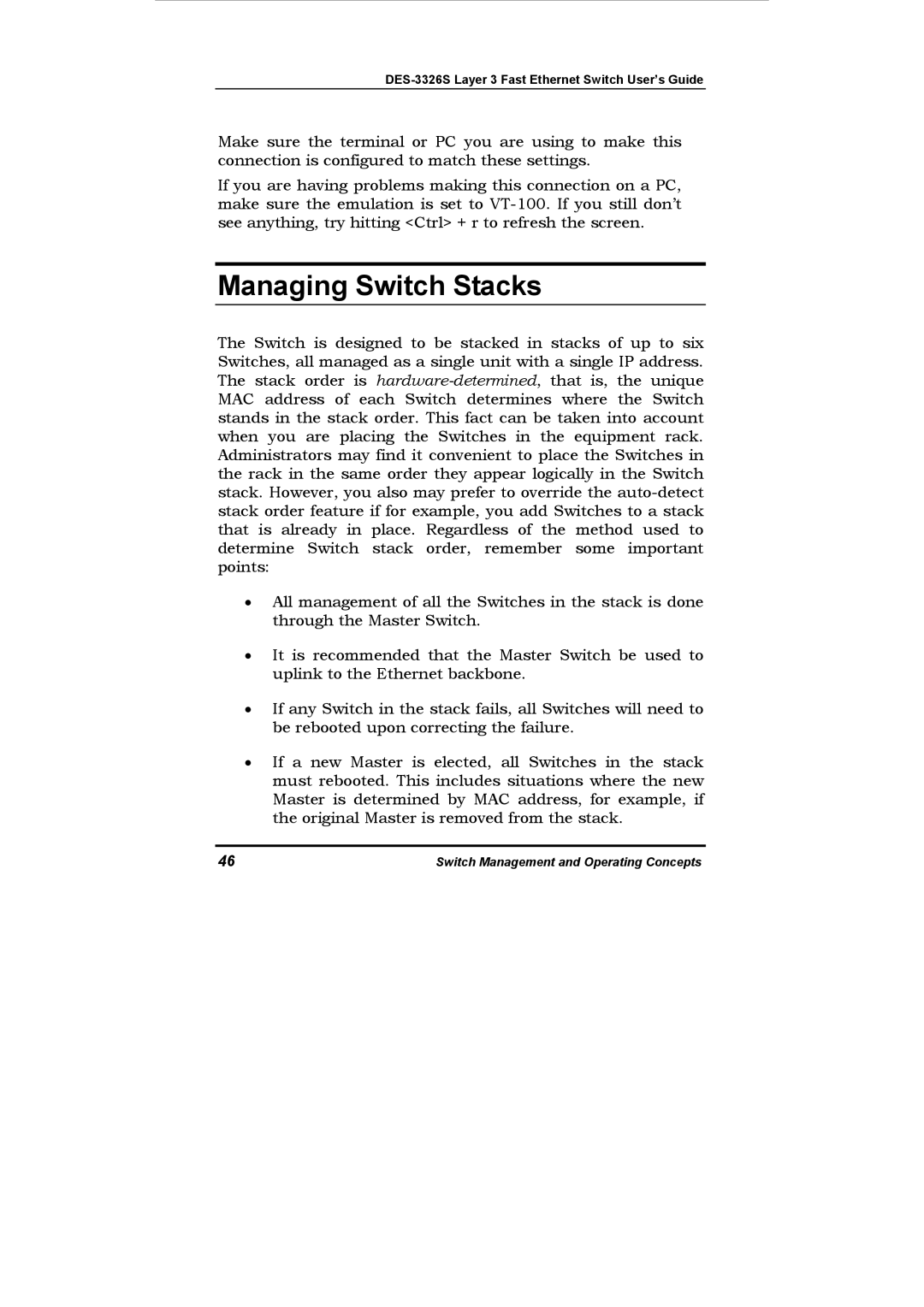
DES-3326S Layer 3 Fast Ethernet Switch User’s Guide
Make sure the terminal or PC you are using to make this connection is configured to match these settings.
If you are having problems making this connection on a PC, make sure the emulation is set to
Managing Switch Stacks
The Switch is designed to be stacked in stacks of up to six Switches, all managed as a single unit with a single IP address. The stack order is
•All management of all the Switches in the stack is done through the Master Switch.
•It is recommended that the Master Switch be used to uplink to the Ethernet backbone.
•If any Switch in the stack fails, all Switches will need to be rebooted upon correcting the failure.
•If a new Master is elected, all Switches in the stack must rebooted. This includes situations where the new Master is determined by MAC address, for example, if the original Master is removed from the stack.
46 | Switch Management and Operating Concepts |
